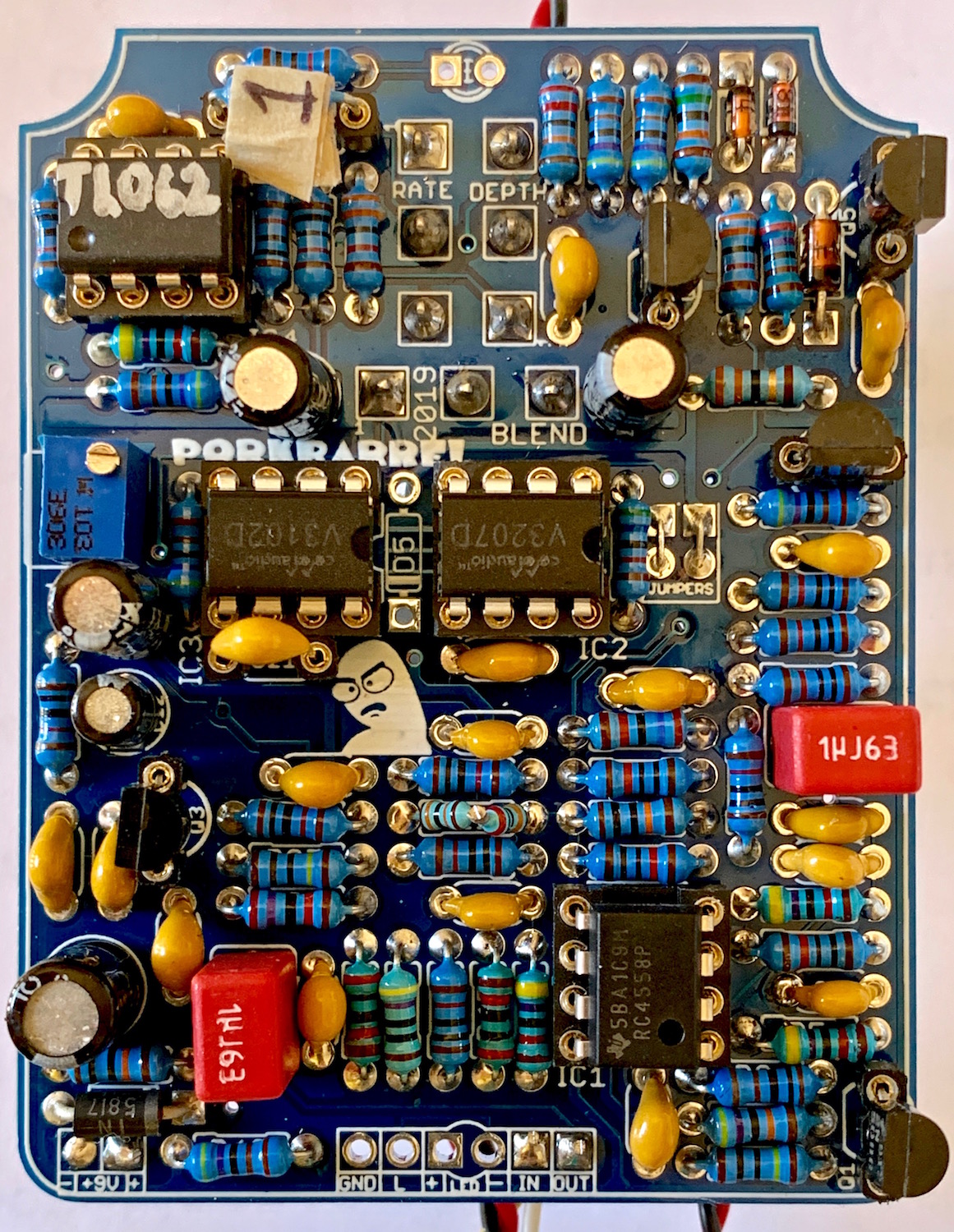MadBean did a fine job on the Zombie Fuzz - a tweaked Fuzz Factory with some fun additions. The included faceplate has space for a couple of SMD LEDs beneath transparent pots with wiring points dramatically close to the bypass LED. Admittedly, wiring up the faceplate was a challenge - but challenge accepted. With the added toggles, one to bypass a short tone stack and one to change the feedback resistance between the two Ge BJTs, this thing has some real ballz. And tho the build specifies a 1590BS (deeper 1590B) or 125B enclosure, I was able to get it all squoze into a 1590B.
Anyway, enough talk . . . . on to the build pics . . . .
Anyway, enough talk . . . . on to the build pics . . . .






























